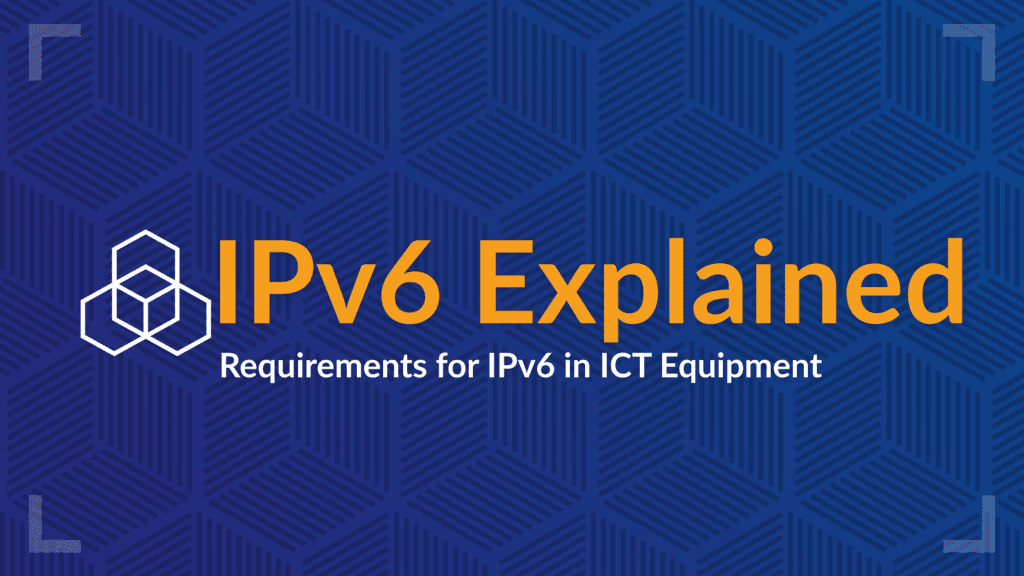
If it seems like IPv6 has been an ongoing topic of conversation in the networking community for many years, that’s because it has. First introduced in 1998, there has been a gradual shift toward IPv6 over the years, and that shift is still ongoing. It formally became an Internet Standard in 2017 and more and more networks continue to make the jump as the years pass and IPv4 networks become harder to maintain – and much more expensive.
If you are still operating an IPv4 network and have been hesitant to make this change, here’s a simple walkthrough on why IPv6 matters for your business – and why starting now will allow your network to scale.
What is IPv6?
The creation of IPv6 was provoked by an impending exhaustion of IPv4 addresses. Due to the 32-bit address space used in IPv4, only a bit over 4 billion unique addresses are possible on that protocol. That might sound like a lot, and it was more than sufficient in the early days of the web. That is no longer the case, as device totals around the world have exploded, and many billions and billions more unique addresses are required.
IPv6 solves this problem by utilizing a 128-bit address space. As a result, an incredibly large number of addresses are now possible through IPv6, with more than enough room for all of today’s devices and trillions more into the future. Of course, it’s only possible to tap into that massive reserve of unique addresses if networks switch over from the old protocol, so it’s important to maintain forward momentum on this initiative.
Why Should You Care?
Assuming you have the IPv4 addresses you need for the devices you run in your organization, you might not feel like it is necessary to make this switch anytime soon. That’s not the case, however, as there are also some practical reasons to make the jump, including the following –
- Improved performance. All network operators and administrators are seeking better performance, and switching to IPv6 can make that happen. Due to the structure of the protocol, there is less processing overhead on routers and switches, meaning data can flow faster. When the network runs smoother and latency is reduced, everyone wins.
- Security gains. There are also security advantages to note with IPv6. Specifically, there is built-in support for IPsec, which is a suite of security protocols for encryption and authentication. Cybersecurity is an important topic for all network operators, so this critical point shouldn’t be overlooked.
- Budget planning. As IPv4 addresses are brought under the realm of cloud providers, it is natural to assume that IPv4 only services will increase in price over time to accommodate the increased IP asset acquisition costs the cloud providers are taking on. That means that your IT costs for IPv4 only services hosted outside your organization will only go up. Adopting IPv6 sooner rather than later naturally gives you an advantage to control these costs in the future by either migrating services onto dual-stack nodes and use IPv6 as a primary interface, or decommission IPv4 entirely where possible and standardize on IPv6.
- Simplified architectures. When deploying IPv6, it affords an opportunity to also optimize your network architecture. As your legacy network has likely grown organically over the years, looking at your deployment holistically with an eye on the future can be a useful exercise to remove legacy infrastructure, but also provide a usable technology template to move forward and take advantage of new protocols, methods and best practices.
Looking to the Future
Everything you do as a business owner or manager involves keeping one eye on the future. Operating your network should be no different, and moving to IPv6 is one sure way to better prepare the digital side of your business for what is to come. It’s largely the rapid advancement of the Internet of Things that is pushing the need for more and more organizations to jump into IPv6 with both feet.
All of those various IoT devices need their own IP address, and sticking with IPv4 might make that impossible. Starting in February 2024, Amazon Web Services (AWS) stated public IPv4 addresses will incur hourly costs, whether attached to a service or not. Between the availability of unique addresses for your growing collection of devices, and the speed at which those devices can operate when using IPv6, staying stuck in the past much longer just doesn’t appear to be a viable solution.
While making the switch to IPv6 can be intimidating, there is no doubt that doing so is in the best interest of your business moving forward. Once you understand why it matters and just how valuable the switch can be, getting through the short-term difficulties of implementation will seem like an easy sacrifice to make. And, once the job is done, you can rest assured that your network will be in a good place and you can turn your attention back to other matters that impact daily operations.
The path forward is clear: IPv6 is not just an option, but a necessity for the agile, forward-thinking organization. As the digital landscape continues to evolve, the question isn’t “Should we switch?” but rather, “How quickly can we make the transition?” Every moment spent deliberating is a missed opportunity to operate more efficiently, to future-proof your network, and to seize the competitive edge.
So, what’s your next move? If you’re feeling overwhelmed by the complexities of IPv6 migration, you’re not alone— and help is just a click away. 6connect specializes in making this transition as seamless as possible, mitigating risks and maximizing returns. Our experts are here to assist and ensure your future is being built on a solid, IPv6-enabled foundation. Contact us today!







